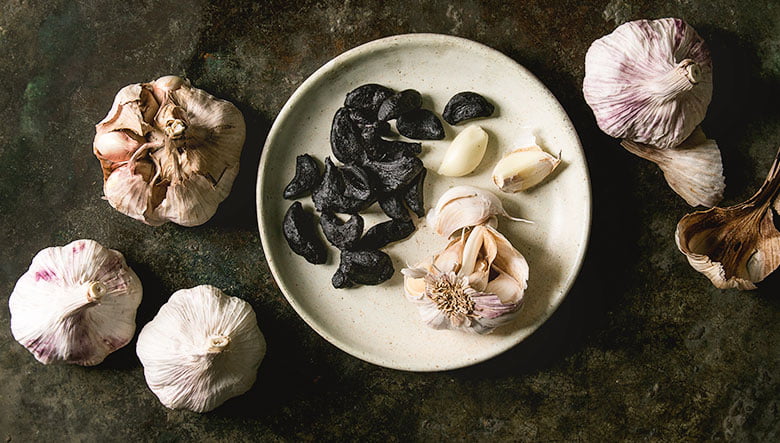Black garlic has been capturing the attention of home cooks, professional chefs, and food aficionados alike with its deep umami character, glossy appearance, and complex flavor profile. If you’ve ever wondered how to move beyond “it tastes good” and convey the true essence of this transformed bulb, you’re in the right place. This guide will equip you with the vocabulary and techniques to taste—and describe—black garlic like a seasoned pro.
What Is Black Garlic—and Why Does It Taste So Different?
Traditional garlic undergoes a gentle, weeks-long fermentation under controlled heat and humidity to become black garlic. This process:
-
Breaks down sulfur compounds: The pungency of fresh garlic mellows into mellow sweetness.
-
Generates Maillard reactions: Sugar and amino acids interact, producing flavors reminiscent of balsamic vinegar, tamarind, and even chocolate.
-
Transforms texture: Firm, papery cloves become soft, sticky, and jam-like.
Understanding these scientific underpinnings primes your palate to appreciate—and articulate—the subtle symphony of tastes and textures you’ll discover.
Training Your Palate: From Blank Slate to Discerning Taster
-
Start Neutral
-
Cleanse your palate with water at room temperature.
-
Avoid strong flavors (coffee, mint) immediately beforehand.
-
-
Mindful Tasting Steps
-
Look: Note color, sheen, and surface texture.
-
Smell: Gently inhale the aroma—don’t rush.
-
Taste: Take a small bite, allow it to coat your tongue fully.
-
Savor: Pay attention to how the flavors evolve from the first hit through the finish.
-
-
Record Your Impressions
-
Keep a tasting journal.
-
Jot down single-word descriptors and then expand into full sentences.
-
The Five Senses of Black Garlic
1. Visual Appearance
-
Color Spectrum: Ranges from deep mahogany to jet‑black.
-
Surface: Glossy and slightly sticky—almost lacquered.
“The cloves glisten like dark caramel, inviting you in with their smooth sheen.”
2. Aromatics
-
Primary Notes: Molasses, soy sauce, roasted nuts.
-
Secondary Notes: Balsamic, tamarind, dark chocolate, even a hint of coffee grounds.
“It greets you with a whiff of sweet soy reduction, edging into tobacco‑leaf earthiness.”
3. Taste Profile
-
Sweetness: Pronounced, akin to blackstrap molasses or date syrup.
-
Umami: Deep and savory, echoing miso or Worcestershire sauce.
-
Acidity: Subtle tang that brightens the palate, reminiscent of aged balsamic.
-
Bitterness: Almost imperceptible, but adds complexity—think of unsweetened dark chocolate.
“It lands sweetly, then a savory backbone takes over, finishing with a delicate balsamic tang.”
4. Texture & Mouthfeel
-
Silky‑Soft: Almost spreadable, similar to thick jam.
-
Viscous: Clings to the palate, delivering flavor in waves.
-
Lingering Finish: Leaves a gentle coating that encourages repeat tasting.
“The flesh dissolves into a silken paste that coats the tongue, coaxing out each layer of flavor.”
5. Aftertaste & Finish
-
Length: Medium to long, giving you time to detect undertones.
-
Evolving Notes: Hints of toasted almond and tobacco emerge last.
“Even after swallowing, a trail of roasted almond lingers, inviting another bite.”
Building Your Flavor Lexicon
To go from “It’s yummy” to “It tastes like aged balsamic drizzled over fig jam,” expand your descriptive toolbox:
| Category | Descriptors |
|---|---|
| Sweet | Molasses, date syrup, brown sugar, toffee |
| Savory | Miso, soy sauce, anchovy, beef broth |
| Acidic | Balsamic vinegar, tamarind, lemon zest |
| Earthy | Tobacco leaf, roasted mushroom, black tea |
| Bitter | Dark chocolate, espresso, charred wood |
Use these words freely, mixing and matching to capture the precise nuance you experience.
Practical Tasting Tips
-
Pair with Neutral Bases: Taste black garlic on plain rice crackers or mild cheeses to let its full character shine.
-
Contrast Temperatures: Try room‑temperature and lightly warmed cloves to see how heat amplifies sweetness.
-
Side‑by‑Side Comparisons: Sample fresh garlic versus black garlic to highlight differences.
Describing Black Garlic in Writing
When crafting tasting notes:
-
Set the Stage: Briefly mention context—temperature, pairing, or dish.
-
Lead with Impact: Start your note with the most striking sensation (“A wave of molasses-sweet richness…”).
-
Layer Details: Follow up with secondary flavors and textures.
-
Invite the Reader: Conclude with a suggestion or evocative image (“Imagine a chocolate fudge drizzled over roasted eggplant…”).
Pairing & Serving Suggestions
-
Cheese Boards: Spread on creamy goat or Brie for a sweet‑umami pop.
-
Marinades & Glazes: Mash into a paste with olive oil and lemon juice for pork or chicken.
-
Savory Baking: Fold into cornbreads or biscuit dough for unexpected depth.
-
Soups & Sauces: Stir into broths or pasta sauces in place of or alongside conventional aromatics.
Conclusion
Mastering the art of describing black garlic is a journey of both sensory exploration and vocabulary-building. By training your palate, honing your scent and flavor lexicon, and practicing mindful tasting, you’ll soon find yourself confidently conveying the complex symphony of sweet, savory, acidic, and earthy notes that make black garlic so unique. Next time you savor those glossy cloves, take a moment to pause, reflect, and share—your tasting notes might just inspire someone else to become a black garlic convert.

Comments (0)
No comments yet. Be the first to comment!